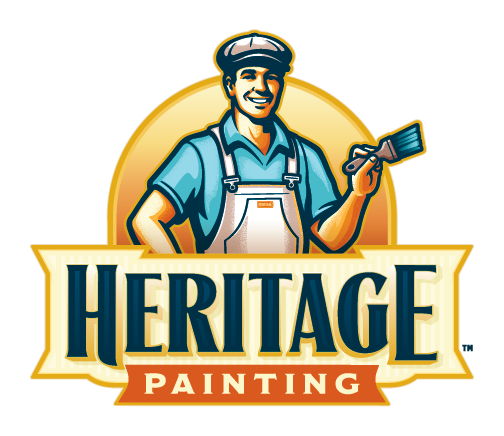Home Exterior Terms to Know
Essential Exterior Painting Terms to Understand
Getting work done on your home is already stressful, especially when you’re communicating a lot with contractors. That communication can become more painful if you’re trying to have conversations around terms you don’t know or fully understand.
Open and clear communication is essential, so we have compiled this list of common terms about home exteriors. These are important terms to know for exterior painting projects and really any project that concerns your home.
Understanding these terms will help you understand precisely what contractors are working on and help clear up any communication issues in the future.
Recommended reading:
- Addressing Your Carpentry Needs Before the Job Begins
- Our TAG Warranty Program
- The Benefits of a Professional Painter
COMMON HOME EXTERIOR TERMS
SIDING AND OTHER SYSTEMS
Batten board – A type of siding where battens or moldings are placed over the seams.
Barge board- Very similar to fascia, but barge board runs diagonally and is found near the gables.
Box-end – Where the facia, barge-board, and soffit meet at the end of the roof.
Brick freeze– A trim board that covers the final row of brick.
Cement siding (Hardie board) – Fiber cement planks are formed by combining wood pulp with Portland cement.
Cedar siding – Cedar wood siding of various sizes.
Chimney – Vertical channel or pipe that conducts smoke and combustion gases up from a fire or furnace and typically through the roof of a building.
Corbel – Decorative piece of trim usually attached to the soffits and trim.
Cupola – Decorative box on the rooftop, may have a weather vein on it.
Fascia board – a wooden board or another flat piece of material covering the ends of rafters, usually attached to the soffit.
Flying beatrice – Gable trim boards that span between two rank run fascia boards fascia boards.
Gable – part of a wall that encloses the end of a pitched roof.
Gable vent – Offers passive ventilation of the attic space.
Gazebo – a roofed structure that offers an open view of the surrounding area, typically used for relaxation or entertainment.
Gutters – a shallow trough fixed beneath the roof’s edge for carrying off rainwater.
Lintel – horizontal support of timber, stone, concrete, or steel across the top of a door or window.
LP or Smart Siding – manufactured wood fiber-based siding.
Rake run – The Sloped sides of a gable end.
Siding – cladding material for the outside of a building.
Soffit – the underside of an architectural structure such as an arch, a balcony, or overhanging eaves.
Trellis – a framework of light wooden or metal bars chiefly used to support fruit trees or climbing plants.
Trim board – additional decoration, typically along the edges of something.
Turret – A small tower or round portion of the house that projects out from the building
Vinyl siding – Plastic exterior siding that is primarily made from polyvinyl chloride.
WINDOWS
Casing – the decorative molding or framing around a window that covers the space between the window frame or jamb and the wall.
Dormer – A window that projects vertically from a sloping roof.
Head and sill apron – the trim that runs under the shelf and is usually decorative.
Grilles/Grid – a collection of sash dividers that are bound together.
Muntins – vertical dividers that separate glass panes in a window.
Mullion – single vertical bars that separate two sides of a window, often a heavier bar.
Rail – Horizontal top, bottom, and sometimes middle of a window.
Sash – the moveable part of a window made up of the vertical and horizontal frame that holds the glass.
Screen – A mesh made of metal, fiberglass, plastic wire, or other pieces of plastic stretched in a frame of wood or metal.
Shutters – Decorative panels, often louvered, inside or outside a window
Sidelights – Narrow, vertical windows on one or both sides of an exterior or patio door.
Sill – Shelf-like, flat piece of the window trim found at the base of the window.
Stiles – found at the sides of a window framework.
Stool – the top of the sill.
DOORS
Cross rail – rail, other than the top and bottom rail, used to separate panels or to separate panels from glazing materials in a combination door.
Door frame/casing – Decorative trimming material around the door opening.
Door jamb – the vertical frame parts that maintain the panel in position on both sides.
Door slab/panel – the whole part of the door that swings back and forth.
Hinge and latch stile – vertical components that sit on the outside edge of a door.
Lock rail – horizontal stiffening member of a paneled door to which the lock is fixed.
Mullins – the vertical component that separates two panels located in the middle of the door between the rails.
Top rail – the horizontal piece that sits across the very top of the door.
If you’re looking for a quote on your home exterior, fill out the form below to get a free estimate from Heritage Custom Painting. Our professional consultants provide detailed, itemized quotes, and we offer complimentary virtual rendering and color consulting services for all of our clients.
Get a Free Quote From Heritage Painting
Fill out the form below and experience the difference today.
